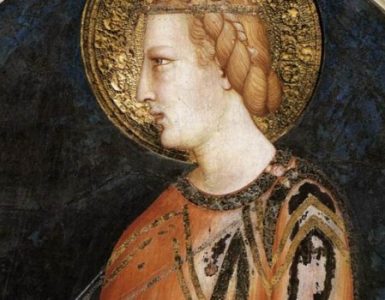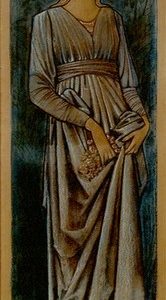The Church loves order. Just look at the liturgical calendar, the Missal, or the Breviary, and you’ll see it. Season after season, day after day, hour after hour—everything is perfectly arranged, meticulously planned. No surprises, no improvisation. Liturgical feasts and memorials return each year in steady rhythm. The Psalms of the Office visit us week by week, like familiar friends retelling their stories. Even the ubiquitous “Amen” returns with charming persistence, seated at the end of every prayer.
The same goes for chant. For centuries, the Church has had its melodies prescribed for every occasion. The Propers for each Sunday and feast waited in line in the Liturgical Books, ready for the cantors to raise their voices in praise of God. The Ordinary chants, too, had their place. During the Easter season, without a doubt, Missa I “Lux et Origo” reigns supreme, with its calm and dignified Kyrie, and the Gloria, Sanctus, and Agnus Dei as bright and joyful as the morning of the Resurrection. The Sundays of Lent and Advent had Missa XVII, whose surprisingly warm melodies softened the time of penance and longing. Certainly, the Church’s deep affection for the Mother of God inspired not one, but two Marian Mass settings: Missa IX “Cum Jubilo” and Missa X “Alme Pater,” with melodies broad and peaceful, filled with the quiet joy of Mary, “Causa nostræ lætitiaæ”—Cause of our joy.
In this liturgical stretch of Ordinary Time between Pentecost and Advent, where we now find ourselves, the Church each Sunday encourages the faithful to sing Missa XI, subtitled “Orbis Factor.”
These names—”Lux et Origo,” “Cum Jubilo,” and “Orbis Factor”—are remnants of a medieval practice known as “troping.” The melodies of chants like the Kyrie often feature long stretches of notes sung on vowels, full of broad melismas. At a certain point, composers began to modify these chants, breaking up the original melismas and adding new texts to them. So, instead of simply “Kyrie eleison,” we had in our Kyrie XI:
Kyrie – Orbis factor, rex æterne – eleison.
Lord – Creator of the world, eternal King – have mercy.
Sometimes this creative expansion spiraled out of control, and tropes grew to enormous proportions. They were added not only to melismatic chants like the Kyrie or Alleluia but also to those with abundant text, like the Gloria or even the Credo. Understandably, this posed a potential threat to the purity of the faith, so it’s no surprise that the Council of Trent restricted the use of tropes, forbidding them in parts of the Mass such as the Creed. As a final note on tropes, we might ask: don’t they remind us of something?
You were sent to heal the contrite of heart: Lord have mercy. Or Kyrie, eleison.
Exactly—the third form of the Penitential Act is nothing other than a trope.
Let’s return to our “ordinary” liturgical time and our “ordinary” Kyrie XI. The melody unfolds across the score with mysterious signs. The chant, as heard in recordings found across the web, captivates with its enigmatic phrases. Is there a key to help us enter into the heart of this chant, to understand what it is singing to us? I believe that the beginning of the trope—”Orbis factor”—might provide such a key.
Orbis factor
Creator of the world
Indeed, the first phrase descends in a broad interval, as if God’s almighty hand is reaching down to touch the earth, causing flowers to bloom, springs to gush forth, and fields of grain to green. The fields green, then yellow, and the ripened ears of grain swaying with the wind in a melody of praise to the Creator.
In the “Kyrie eleison,” the melody called from below, we’re unable to reach Heaven. But now—in the “Christe eleison”—it seems to touch the firmament. How is this possible for a human being, so small before the majesty of God? It is possible because we call upon “Christe”—“through him, and with him, and in him,” who himself said, “No one comes to the Father except through me” (John 14:6). And again, the melody flows like a bow before the Face of God. The cantor sings, and the Church responds in the name of Christ, raising a chant full of longing and trust—”Christe eleison”—for the Son of God sings with us.
And once again, “Kyrie eleison.” Once again, the initial melody returns. Like day and night. Like inhaling and exhaling. Like vigilance and rest. “Kyrie eleison”—Lord, have mercy. It returns because we are in constant need of God’s mercy. Of His embrace when we are lost, His lifting us up when we fall, His light when we walk in darkness. For yet another day, yet another night, another breath, another vigil, until we find the rest—that Eternal Rest.
The final “Kyrie eleison” changes. It moves deeper. Knowing it cannot reach higher, it descends to the very bottom. To the depths of our misery, where our need is greatest, but where we are closest to the merciful God. Or perhaps into the depths of prayer, where it is only Him and me. Obedient to the call: “Put out into deep!” (Luke 5:4).
Once more, for one last time: “Kyrie eleison.” Once more: “Lord, have mercy.”
The chant falls silent. The heart continues beating. Breath flows on. Inhale. Exhale. Day. Night. The world sings to its Creator with every drop of rain and every ray of sunlight. With every blade of grass and every flutter of a butterfly’s wing. With the depth of the Pacific and the height of the Himalayas.
Kyrie, orbis factor, eleison!
Lord, Creator of the world, have mercy!
The whole world sings a song of supplication but also a song of praise, for He is “Kyrios”—the Lord—”to whom be glory forever and ever.”
It seems the whole world sings. How many notes in this grand song are yours?
Editor’s Note: This author is in the midst of his Pascha crucifixionis project. Learn more about it and how to participate by visiting https://paschacrucifixionis.com.
Photo by Peter Herrmann on Unsplash










